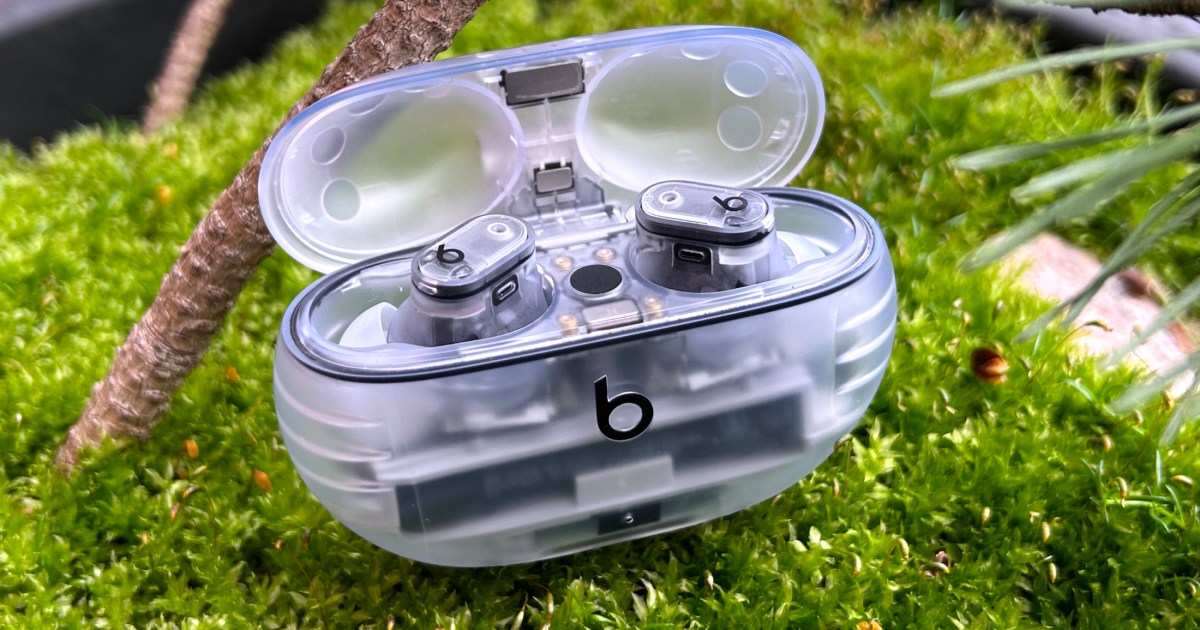
Beats Studio Buds+ review: clearly better buds
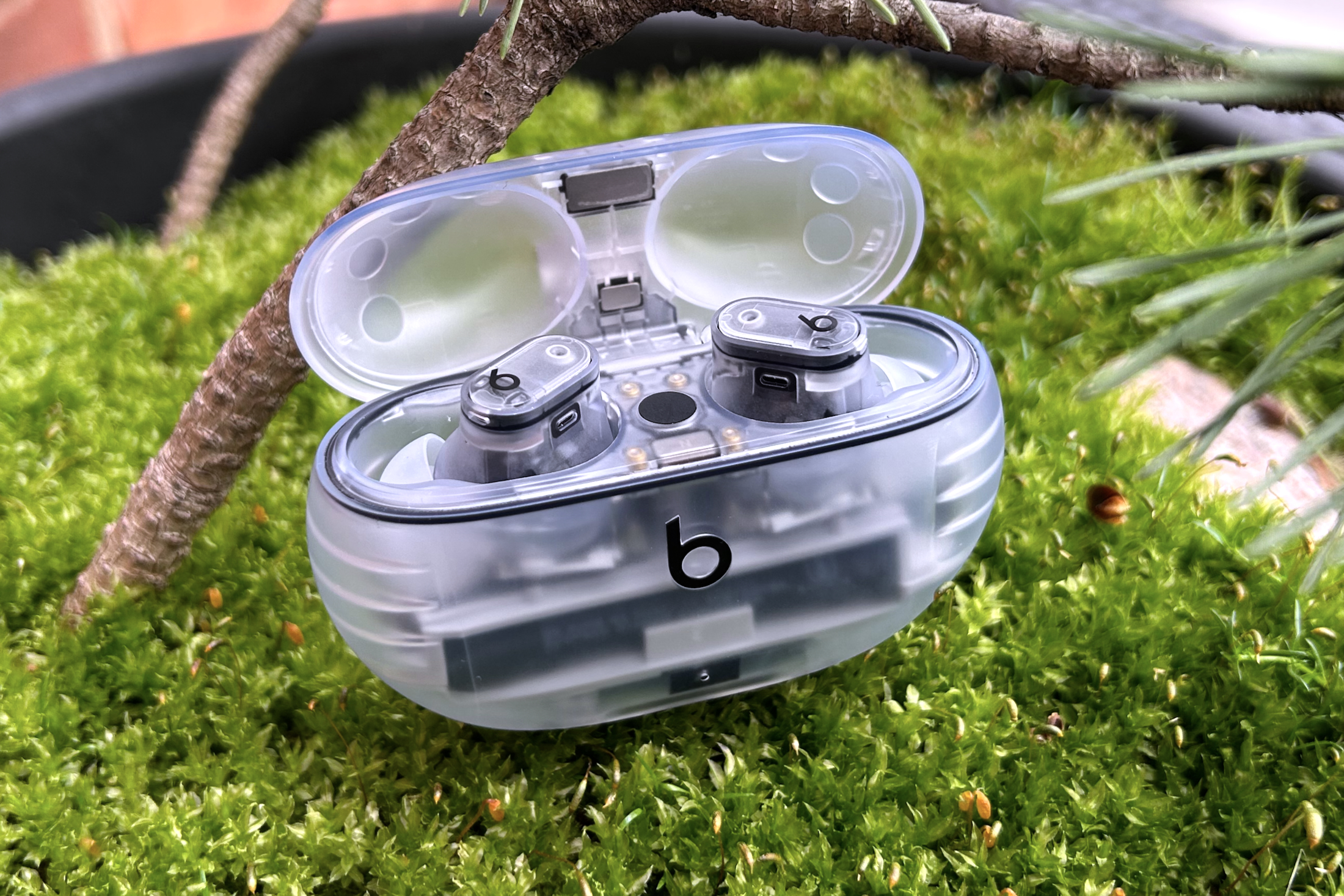
Beats Studio Buds+ review
MSRP $170.00
“Solid improvements make the Buds+ worth the extra $20.”
Pros
- Very comfortable
- Great battery life
- Excellent noise canceling
- Solid call quality
- Clear transparency mode
Cons
- No wireless charging
- No Bluetooth Multipoint
- No EQ controls
Amazon’s inadvertent product listing for the Beats Studio Buds+ turned out to be absolutely accurate. The new wireless earbuds, which are now available for $170, are being positioned not so much as an update to the original Beats Studio Buds, but as an in-between product that offers more than the Studio Buds, but less than the more recent $200 Beats Fit Pro. And that’s a bit weird.
Weird in the sense that the Studio Buds+ have a lot of improvements over the original Studio Buds. But instead of introducing them as a second-gen device and charging the same amount of money, Beats has chosen to charge $20 more for the Buds+ and sell them alongside the original Buds, at least for now.
So the question is do you spend a little more for the improvements? Or save a little and stick with regular Buds? Spoiler: I think you should spend the extra $20.
What’s changed?
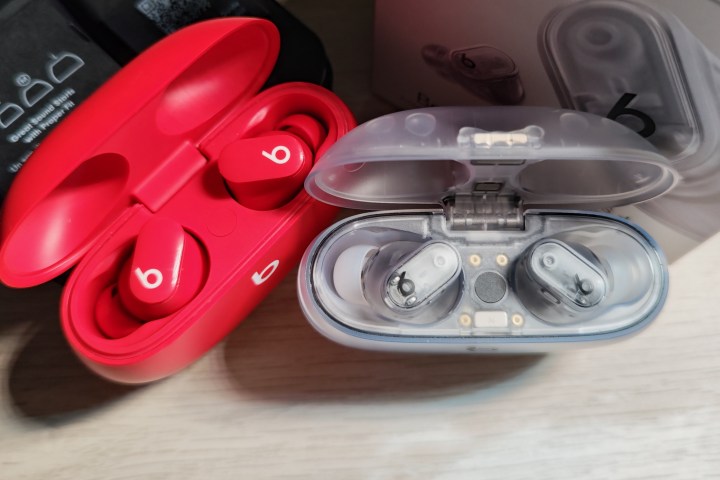 Beats Studio Buds in red and Studio Buds+ in transparent. Simon Cohen / Digital Trends
Beats Studio Buds in red and Studio Buds+ in transparent. Simon Cohen / Digital Trends
I’ll get into all of the details, but here’s a TL;DR in case you’re in a hurry.
- Improved battery life (36 total hours versus 24 hours)
- Better active noise cancellation (ANC)
- Better transparency
- Better call quality
- Redesigned controls and acoustics
- $20 more
What’s crazy about the Beats Studio Buds+ is that — if you ignore the wild new transparent color option — they look virtually identical to the Studio Buds. And yet Beats claims that 95% of the internal components in both the buds and the case are new. That goes for the batteries, the microphones, and even the multifunction buttons.
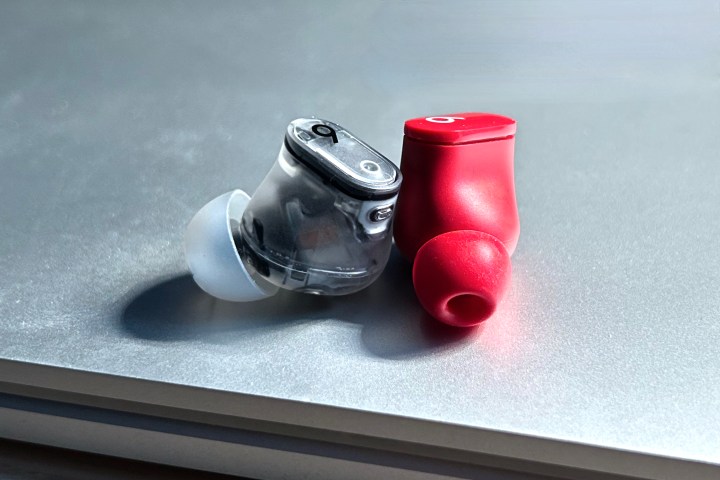 Single Beats Studio Buds+ (transparent) next to a Studio Bud. Simon Cohen / Digital Trends
Single Beats Studio Buds+ (transparent) next to a Studio Bud. Simon Cohen / Digital Trends
Sure enough, if you look closely, you can see that the buttons now sit almost flush with the edges of the earbuds, instead of being perched on top. Beats says this new design reduces unintentional clicks and I concur; accidental presses are now very rare.
You still get IPX4 water resistance — good enough for workouts if you clean them after — and thankfully, the excellent ergonomics of the originals have been preserved. These remain some of the most comfortable in-ear buds I have ever worn. More people will be likely to agree — you get four sizes of silicone eartips to choose from, instead of three, including a set of extra-small tips.
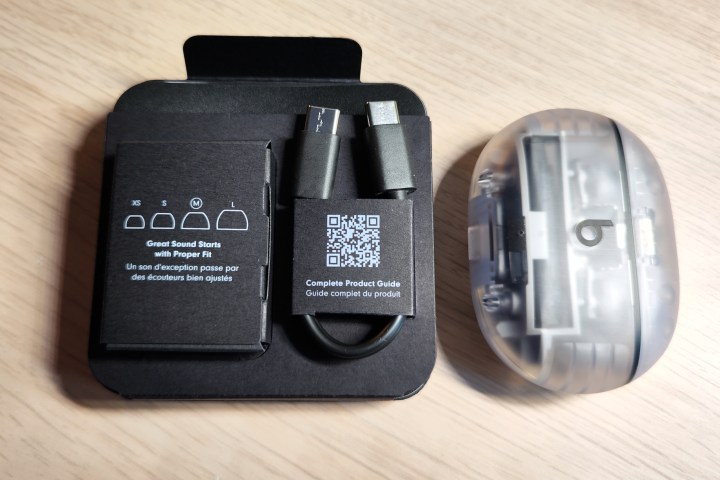 Simon Cohen / Digital Trends
Simon Cohen / Digital Trends
Sadly, Beats hasn’t carried over the ear fit test function from the Fit Pro, so finding that perfect fit will be a bit of trial and error.
Battery life has been substantially improved. Not so much on a per-charge basis, which only goes up by an extra hour when not using ANC (9 hours versus 8), but absolutely on the total battery life, which jumps from 24 to 36 hours. In other words, the case now holds three full charges instead of the previous two. As before, a 5-minute quick charge will buy you an extra hour of playtime, and also as before, your playtime will be heavily reduced when using ANC or transparency (down to six hours).
Speaking of the case: No, it doesn’t do wireless charging; yes, it has the same physical dimensions as the original; no, you can’t put the Buds+ inside the original case or vice versa. I mean, you can — they’ll fit — but they won’t charge. The Buds+ emitted an unhappy squawk when I tried. That means you won’t be able to amp up the total time of your Studio Buds by buying a Studio Buds+ replacement case.
Whether you like the new transparent color option or not (you can also get the Buds+ in ivory and a black/gold combo), it has one big advantage: the scratches and marring that will inevitably accumulate over time will be much harder to see.
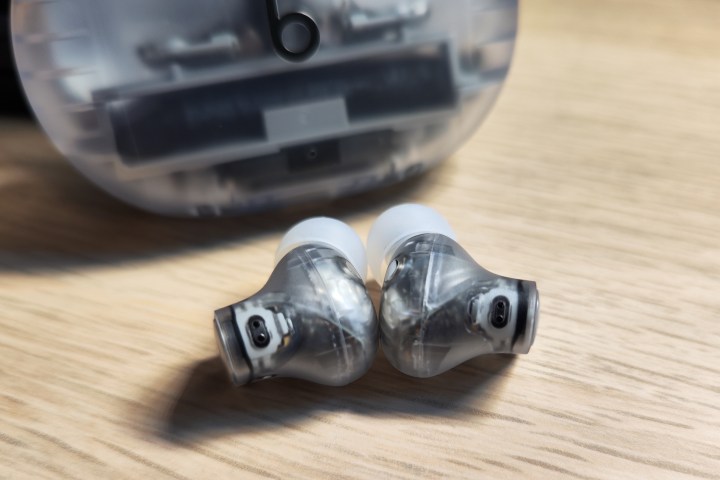 Simon Cohen / Digital Trends
Simon Cohen / Digital Trends
ANC, transparency, and sound quality
ANC hasn’t just been improved a little — it’s been improved a lot. Beats says it’s 160% better, but I’m inclined to say 200%. It’s better than the Fit Pro, way better than the original Beats Studio Buds, and it comes within spitting distance of the Apple AirPods Pro 2. Let me be clear: this one improvement alone is worth the extra $20 if quiet is what you crave.
Transparency mode is also excellent, at least when it comes to hearing the outside world. Once you start to speak, you realize it’s not quite as magical as the AirPods Pro 2, but for the price, it’s superb.
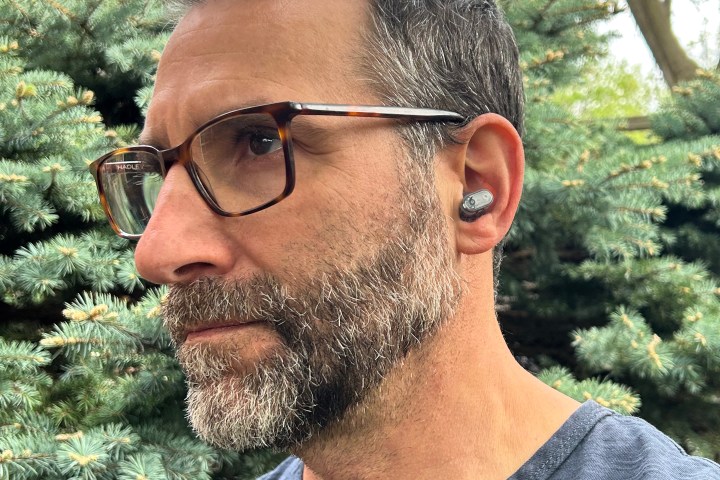 Simon Cohen / Digital Trends
Simon Cohen / Digital Trends
Improved ANC and transparency performance are the direct result of having better mics and better noise-processing algorithms, so it was no surprise when I discovered that call quality is improved. The original Studio Buds are good indoors, and you can use them in a pinch when outside, but frankly your callers might wish that you didn’t. The Studio Buds+, by comparison, might not even give away the fact that you’re outside. They do an amazing job of keeping competing sounds from making their way to the other end of the call. Your voice won’t always remain stable at times when those sounds get loud, but it’s only a mild case of wobbliness. Short of taking a Teams call next to an active construction site, you should be good to go.
Sound quality is the one area where the Studio Buds+ offer only tiny enhancements, which makes sense — of the 95% new components, the drivers are one of the only parts that were preserved from the original product. If you have the original Studio Buds and you like their sound signature, you’ll really like the Studio Buds+ too — they sound very close. They have that same energetic tuning that lets the highs sparkle with excellent clarity. The soundstage is where you may notice the difference. I think the Studio Buds+ might have a touch more detail and precision, and there’s a slightly more immersive quality to the overall presentation, but we’re talking a 5% difference at the most.
Beats (like Apple itself) is steadfastly sticking to its guns on Bluetooth codec support. You won’t find aptX, LDAC, or any other high-quality codecs beyond SBC and AAC. Would they make a big difference if they were available? Maybe. But for day-to-day listening, I don’t think it matters.
I still found myself wishing for an EQ adjustment, and getting sufficiently strong bass response requires a combination of the right eartips and the right angle when you insert the buds — get either of these wrong and you’ll wonder why anyone would give these things a good review. Get them right and bass will still be on the conservative side (weird given Beats’ traditional strength with hip-hop, rap, and other bass-forward genres), but it will be enough to enjoy a wide variety of musical tastes.
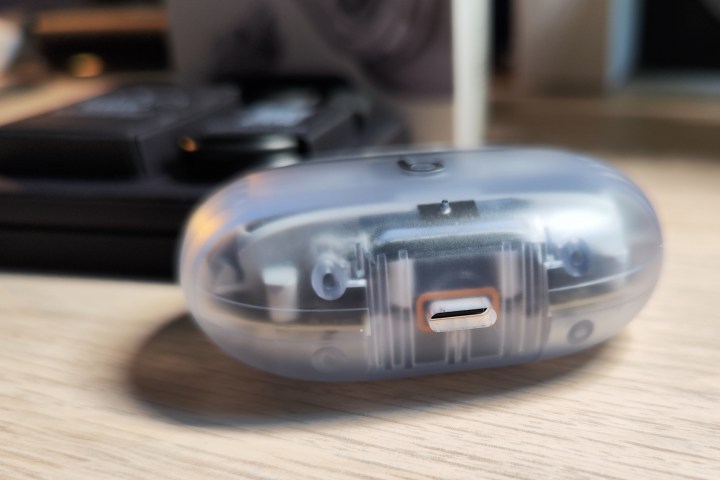 Simon Cohen / Digital Trends
Simon Cohen / Digital Trends
Despite being an Apple-owned brand, Beats products play nicely with Android phones as well as those from Apple. The buds support Google Fast Pair and there’s a dedicated Beats app for Android. It doesn’t offer much in the way of adjustments — it lets you rename the Buds and get software updates, and you can change the default behavior of the press-and-hold gesture from ANC control to volume control — but it’s better than the alternative (there is no Android app for Apple’s AirPods family).
There’s even the ability to manage multiple device connections without needing to use the Bluetooth menu, but this is highly ecosystem-dependent. In the Apple world, you can quickly and easily switch between Apple devices if you’re signed into iCloud. In the Android world, the same is true for Google account holders. This also gives you access to Google’s Locate My Device feature. However, if you want true Bluetooth Multipoint, e.g., an iPhone and a Windows PC connected simultaneously, you’re out of luck.
We can debate whether or not Beats should have simply introduced the Beats Studio Buds+ as the new Studio Buds and kept the price the same. We can also debate whether or not $170 is a fair price to pay for a set of earbuds like the Beats Studio Buds+ when there are very good alternatives like the $150 Jabra Elite 5 or the $150 Anker Soundcore Liberty 4. I can see strong points in both discussions, especially as both of these products have two features I really wish the Buds+ had: wireless charging and wear sensors.
But if you want to know if you should spend $150 on the Studio Buds or $20 more on the Studio Buds+, I’m unequivocal: just do it.


